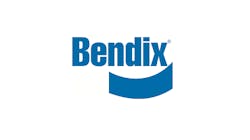Bendix offers insights on technology, adoption, and regulation following NTSB Most Wanted List
Every year, the National Transportation Safety Board (NTSB) investigates crashes involving commercial vehicles and considers how to prevent them, work that helps to shape its biennial “Most Wanted List of Transportation Safety Improvements.” Bendix Commercial Vehicle Systems LLC (Bendix), in support of safer roads for everyone, considers the 2021-2022 Most Wanted List a valuable foundation for education and safety enhancement across the commercial vehicle industry.
“While the list addresses all forms of transportation, including passenger vehicles, trains, buses, and planes, it’s important for all of us to pay attention in particular to the section addressing highway safety,” said Fred Andersky, Bendix director of government and industry affairs. “This year’s recommendations in the Highway section of the list include what has been a highly active topic of discussion in trucking for the past few years: requiring collision-avoidance technologies on all vehicles.”
This isn’t a new approach for the NTSB, which has been advocating for systems such as forward-looking adaptive cruise control and collision mitigation for more than a quarter century. According to figures published by the board, an estimated 50% of all rear-end collisions for both cars and trucks could be prevented if vehicles have forward-collision warning and automatic emergency braking systems. “We need more vehicles equipped with these life-saving technologies, and vehicle and fleet owners should be more informed about their benefits,” writes the NTSB.
Forward collision warning and autonomous emergency braking (AEB) are just two of the features of the Bendix Wingman Fusion driver assistance system. Bendix launched the first generation of Wingman Fusion in 2015, integrating radar, camera, and a vehicle’s brake system to create its flagship driver assistance system. Since then, the company has continually expanded and improved the capabilities of the system through advancements such as providing full braking power on the tractor. Bendix Wingman Fusion with Enhanced Feature Set introduced even more improvements beginning in 2019.
“We’ve long been a proponent that motor carriers – not solely mandates – should be the catalyst to drive safety technology adoption. Fleets utilizing these systems have a firsthand understanding of the difference they are already making on the road,” Andersky said, “so we’re not surprised that the NTSB would like to see regulatory standards established for collision warning and AEB in commercial vehicles, and require the technology in all highway vehicles and all new school buses.”
Further reinforcing the NTSB’s position is a 2020 study from the Insurance Institute for Highway Safety (IIHS)/Highway Loss Data Institute (HLDI) concluding that forward collision warning “was associated with a statistically significant 22% reduction in the rate of police-reportable crashes per vehicle miles traveled, and a significant 44% reduction in the rear-end crash rate of large trucks.”
Building awareness of these technologies – including exactly how they work and what their capabilities are – is high on the NTSB list for regulators as well as manufacturers in the commercial vehicle industry. Bendix collision mitigation systems are available factory-installed through most major North American truck makers and are standard on several makes and models. In addition, Enhanced Autonomous Emergency Braking (AEB), Enhanced Stationary Vehicle Braking (SVB), and Multi-Lane AEB can be retrofitted to trucks equipped with earlier versions of the Bendix Wingman Fusion system as part of the Bendix Retrofit Upgrade Program. The upgrades are available for certain models manufactured by International Trucks, Kenworth Truck Company, Mack Trucks, Peterbilt Motors Company, and Volvo Trucks NA.
“Any driver should keep in mind that when buying vehicles equipped with these systems, understanding what they will do and won’t do is important,” said Andersky, who holds a Class A CDL. “Drivers must always be cognizant of the fact that no safety technology replaces a skilled, alert driver exercising safe driving practices. Safety technologies complement safe driving, and the driver is in control of their vehicle at all times. These systems and features are purposely titled driver assistance because they do just that – they are not driver replacement.”
Although regulating commercial vehicles is the responsibility of Congress, NHTSA (National Highway Traffic Safety Administration), FMCSA (Federal Motor Carrier Safety Administration), and other agencies, recommendations from the NTSB are influential, often putting the trucking industry ahead of the actual regulatory curve. Electronic stability control, for instance, was not mandated on new Class 7 and Class 8 tractors until 2017 – nearly two years after a majority of North American truck makers were already including the technology as standard.
“There are always going to be early adopters driving advances in technology, but collision mitigation systems are becoming more mainstream in trucking, and once fleets try it, they tend to keep ordering it,” Andersky said. “And anything that we can do to better educate, train, and equip fleets and drivers with the tools to be smarter and safer behind the wheel benefits all of us.”
Bendix’s ever-growing portfolio of commercial vehicle technologies delivers on areas critical to the success of fleets and drivers, including safety, vehicle performance and efficiency, and post-sales support. By strengthening return on investment in the equipment and technologies that keep trucks and drivers safe and lower the total costs of vehicle ownership, Bendix helps enhance the safety of everyone sharing the roads of North America.
